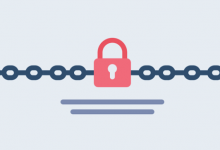The rise of ransomware attacks and how to defend against them
Title: The Rise of Ransomware Attacks and How to Defend Against Them
Introduction
In recent years, ransomware attacks have become a significant cybersecurity threat, causing enormous financial losses and disruptions to businesses, organizations, and even individuals. As perpetrators become more adept at launching sophisticated attacks, it is critical for everyone to understand the risks associated with ransomware and learn effective defense strategies to protect against these debilitating cyber threats.
The Surge in Ransomware Attacks
Ransomware attacks involve malicious software that encrypts files and systems, rendering them unusable until a ransom is paid, typically in cryptocurrency. These attacks have witnessed a dramatic rise due to several contributing factors:
1. Financial Incentive: Ransomware attacks have proven to be lucrative for cybercriminals, offering a relatively low-risk method to extort large sums of money. Attackers often demand hefty ransoms, exploiting the victim’s desperation to regain access to encrypted data.
2. Ease of Deployment: The evolution of ransomware-as-a-service (RaaS) models has made it easier for even novice hackers to launch these attacks. Cybercriminals can now leverage prepackaged ransomware kits and take advantage of various exploit kits available on the Dark Web.
3. Increased Sophistication: Attackers continuously refine their techniques, employing advanced tactics, such as spear-phishing, drive-by downloads, and encryption algorithms that are difficult to crack. These measures make it harder to defend against and recover from an attack.
Defending Against Ransomware Attacks
While preventing ransomware attacks entirely can be challenging, a proactive approach to cybersecurity can significantly mitigate the risks and minimize potential damage. Here are some practical steps to defend against ransomware attacks:
1. User Education: Organizations and individuals alike must invest in education and awareness campaigns to train users on recognizing and avoiding suspicious emails, attachments, and links. Cyber hygiene practices, such as regular software updates and strong, unique passwords, should be emphasized.
2. Robust Backup Strategy: Employing a comprehensive backup strategy is crucial to restore data in case of an attack. Regularly back up critical files and ensure the backups are stored separately from the main system, preferably offline or on a protected network.
3. Endpoint Protection: Implementing robust antivirus and anti-malware solutions on all devices can help detect and prevent ransomware infections. These solutions should include real-time scanning, behavioral analysis, and exploit mitigation capabilities.
4. User Access Control: Limiting user privileges and implementing the principle of least privilege ensures that only necessary personnel have access to critical systems and can minimize the impact of a potential ransomware attack.
5. Security Patching: Regularly patching and updating software and operating systems helps address vulnerabilities that attackers exploit to gain unauthorized access. Vulnerability management tools can automate this process and ensure timely patch deployments.
6. Network Segmentation: Dividing networks into isolated segments can help contain the spread of a ransomware attack. Limiting lateral movement reduces the risk of complete system compromise and enhances overall network security.
Conclusion
The rise of ransomware attacks underscores the critical importance of prioritizing cybersecurity measures. Organizations and individuals must employ a multi-layered defense approach, combining user education, data backups, endpoint protection, access control, patching, and network segmentation. By staying vigilant, proactive, and informed, we can combat the ever-evolving threat landscape and safeguard our valuable data from the devastating effects of ransomware attacks.






Spot on with this write-up, I absolutely feel this amazing site needs far more attention. I’ll probably be returning to read more, thanks for the information!
Come back soon)